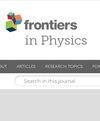用于光子和质子束金属植入物附近二维剂量测量的模型
IF 1.9
3区 物理与天体物理
Q2 PHYSICS, MULTIDISCIPLINARY
引用次数: 0
摘要
这项研究旨在确定一个专用模型的特性,以评估使用光子和质子进行放射治疗时金属植入物附近的剂量。我们重新设计了一个剂量测定审核模型,将 Gafchromic EBT-3 薄膜放置在直径为 6.5 毫米的钛椎弓根螺钉内。测定了模型材料的质量密度和水等效厚度(WET)。使用光子弧和水平质子束结合旋转 20° 的沙发对模型进行照射,每次重复测量三次。利用覆盖螺钉和 EBT-3 薄膜的单场对治疗方案进行了优化,分别使用光子和质子的塌缩锥和蒙特卡洛剂量引擎,使物理剂量达到 2 Gy。模型的质量密度和 WET 分别确定为 (1.033 ± 0.010) gcm-3 和 (1.022 ± 0.013)。电离室测量结果与计算剂量值的吻合度分别为 1%(光子)和 0.5%(质子)。使用 EBT-3 胶片进行的相对光子剂量测定显示,在距离中心 5 毫米以外的区域,测量值和计算值的水平剖面一致性在置信区间内。对于光子计划,在模型材料和螺钉之间的界面上发现了超过 10% 的明显偏差。质子测量结果显示,两个剖面上的偏差逐渐减小了 3%。与光子计划不同的是,在螺钉内测得的剂量没有增加,但在射束出口区域测得的剂量波动很大(5%)。这项研究表明,剂量引擎的行为会受到金属植入物的影响,因此强烈建议进行剂量测定。该模型可作为专用端-2-端模型的基础。本文章由计算机程序翻译,如有差异,请以英文原文为准。
A phantom for 2D dose measurements in the vicinity of metal implants for photon and proton beams
This work aimed to characterize a dedicated phantom for assessing the dose near metal implants for radiotherapy with photons and protons. A dosimetry audit phantom was redesigned to position a Gafchromic EBT-3 film within a bisected titanium pedicle screw (6.5 mm diameter). The mass density and the water equivalent thickness (WET) of the phantom material were determined. The phantom was irradiated using a photon arc and a horizontal proton beam in combination with a couch rotation of 20°, with three repeated measurements each. Treatment plans utilizing a single field covering the screw and the EBT-3 film were optimized to deliver a physical dose of 2 Gy using a collapsed cone and Monte Carlo dose engine for photons and protons, respectively. The mass density and the WET of the phantom were determined as (1.033 ± g c m − 3 ± >
求助全文
通过发布文献求助,成功后即可免费获取论文全文。
去求助
来源期刊

Frontiers in Physics
Mathematics-Mathematical Physics
CiteScore
4.50
自引率
6.50%
发文量
1215
审稿时长
12 weeks
期刊介绍:
Frontiers in Physics publishes rigorously peer-reviewed research across the entire field, from experimental, to computational and theoretical physics. This multidisciplinary open-access journal is at the forefront of disseminating and communicating scientific knowledge and impactful discoveries to researchers, academics, engineers and the public worldwide.
 求助内容:
求助内容: 应助结果提醒方式:
应助结果提醒方式:


